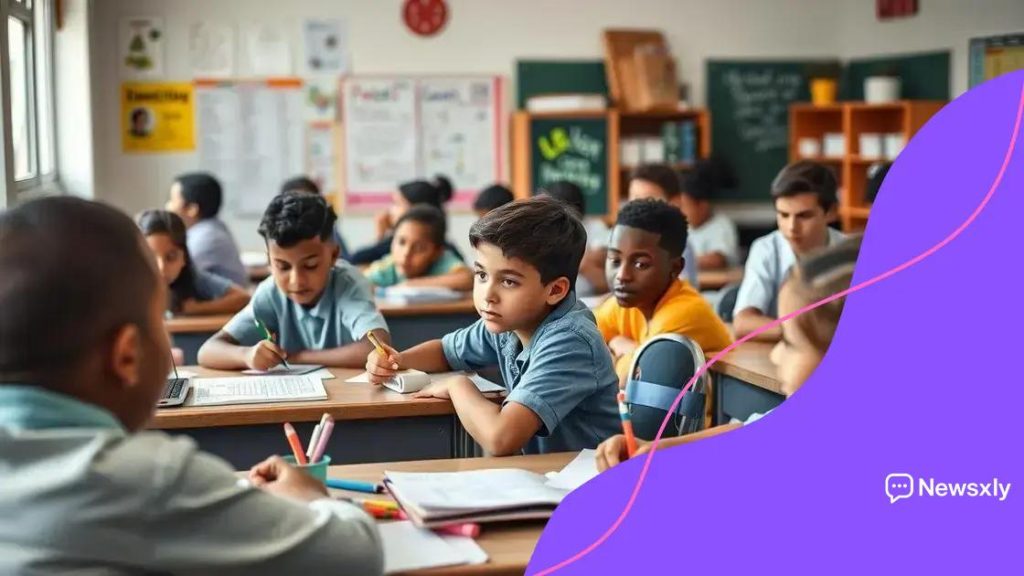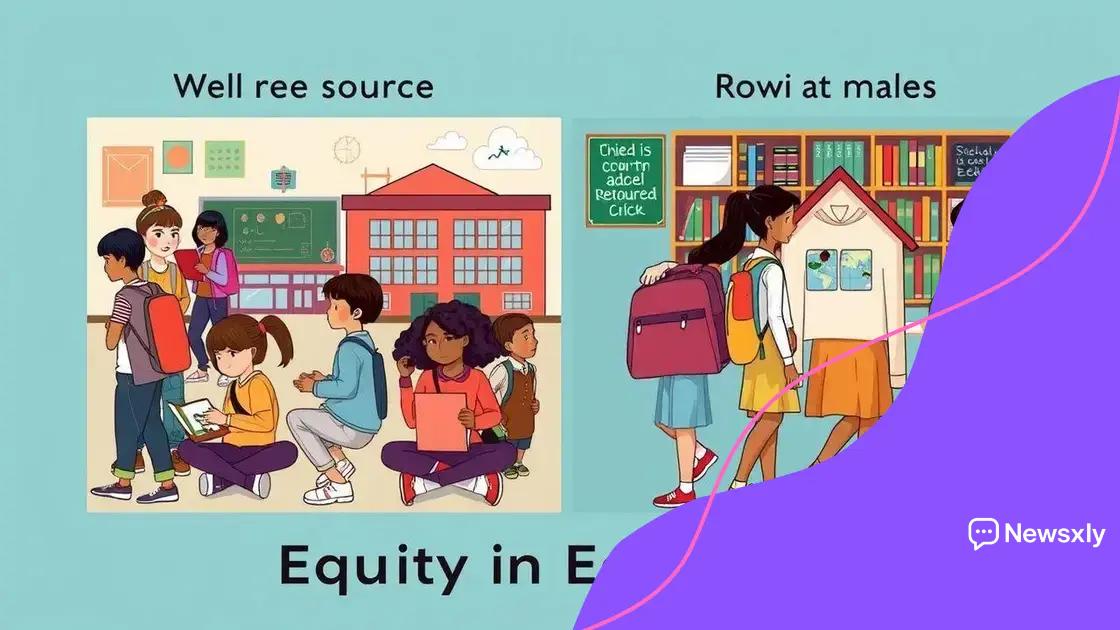The impact of school choice policies on education quality

The impact of school choice policies includes increased opportunities for families to select quality education options, but it also presents challenges like equity issues and varying educational standards across schools.
The impact of school choice policies is a hot topic among educators and parents alike. Have you ever wondered how the flexibility of choosing between schools might shape your child’s educational journey? In this article, we delve into the nuances of these policies and their implications.
Understanding school choice: Definitions and types
Understanding school choice is essential in today’s education landscape. It allows students and families to select schools based on preferences rather than geographical boundaries. This flexibility can lead to a more personalized education experience.
Types of School Choice
There are several forms of school choice that cater to different needs and circumstances. Each type plays a significant role in shaping educational opportunities. Here are some common types:
- Charter Schools: Public schools that operate independently of the traditional school system.
- Voucher Programs: Allow families to use public funding for private school tuition.
- Magnet Schools: Specialized public schools that focus on particular fields of study.
- Homeschooling: Education conducted by parents at home, tailored to the child’s learning style.
Each option presents unique advantages and challenges. Charter schools, for example, can innovate without strict regulations but may also face issues of accountability. Vouchers can provide more choice but might divert funds from public schools. Magnet schools attract students with specialized programs, creating opportunities for high-quality education. Similarly, homeschooling allows for personalized pacing and learning styles, yet requires significant commitment from parents.
The various types of school choice empower families to find the best fit for their children. Understanding these options helps parents make informed decisions and advocates push for policies that benefit all students. As the school choice movement evolves, continued dialogue about its impact on equity and accessibility remains critical.
The relationship between school choice and educational performance
The relationship between school choice and educational performance is a significant area of study. Many believe that allowing families to choose schools leads to improved outcomes for students. This idea opens a discussion about how choice impacts both individual students and the education system as a whole.
Impact on Student Achievement
Research shows mixed results regarding student performance. Some studies highlight that students who attend choice-based schools often achieve higher test scores. Specifically, charter schools have been credited with boosting performance in certain areas.
- Increased competition can drive schools to improve.
- Parents can choose schools that align with their child’s needs.
- Choice can lead to more engaged and motivated students.
However, achievement varies greatly. Some students thrive in charter or private schools, while others do not see the same benefits. Factors such as socioeconomic background and available resources can influence the effectiveness of school choice.
Equity Considerations
Equity is another critical aspect of this relationship. Although school choice aims to provide opportunities, it can also perpetuate inequalities. If low-income families lack the means to access better schools, the intended benefits may not be realized. Additionally, some voucher programs can limit options for marginalized students.
To foster true equitability, policies must ensure that all students have equal access to quality education, regardless of their background. This includes providing support and resources to families who may struggle to navigate the system. The interplay between school choice and performance isn’t just about numbers; it reflects a broader commitment to fairness in education.
How school choice impacts equity in education

Understanding how school choice impacts equity in education is crucial for fostering an inclusive system. While school choice is meant to empower families, it can sometimes lead to unequal opportunities. This issue raises important questions about access and resources available to all students.
Access to Quality Schools
School choice can enhance access for some families, but it may limit choices for others. Families in affluent areas often have more options, while low-income families may struggle to find suitable schools.
- Affluent families can use vouchers or funds to access high-quality private schools.
- Low-income families might remain in underfunded public schools with fewer resources.
- Transportation and costs can create additional barriers for disadvantaged families.
A lack of equal access can widen the achievement gap between different socioeconomic groups. For school choice to be effective, it must address these disparities and ensure that all families have genuine options.
Resource Allocation
The allocation of resources plays a significant role in equity. Schools that attract more students, often through enhanced programs, receive more funding. This can result in a cycle where popular schools become better financed, while less popular options suffer.
This cycle can create a significant divide in quality. Equitable funding is essential to support all schools, especially those serving lower-income students. By redistributing resources fairly, schools can better meet the needs of diverse populations.
Success stories: Effective school choice policies
Success stories often highlight how effective school choice policies can transform education. These policies have enabled many students to thrive by providing greater access to quality schools. Well-implemented school choice initiatives can lead to improved student outcomes and increased satisfaction among families.
Examples of Effective School Choice
Many cities and states across the country have adopted policies that promote school choice successfully. These initiatives have helped shape inspiring examples:
- New Orleans: After Hurricane Katrina, the city rebuilt its education system with a focus on charter schools, resulting in significant improvements in student performance.
- Florida: The state has expanded its voucher programs, allowing families to choose private schools, leading to higher graduation rates among participating students.
- Chicago: Diverse options, including magnet schools and innovation schools, provide tailored education experiences, improving overall academic achievement.
These success stories showcase how thoughtful policies can create better educational environments. When families have options, they can select schools that best suit their children’s needs, leading to higher engagement and performance.
Community Involvement
Another key to success is the involvement of the community. When stakeholders, including parents, educators, and policymakers, collaborate, they develop policies that work effectively. Community engagement ensures that initiatives reflect the diverse needs of families. It also fosters a sense of ownership among stakeholders, further enhancing the policies’ effectiveness.
Moreover, sharing successful outcomes and best practices encourages other regions to adopt similar policies. These collaborative efforts can lead to systemic changes that enhance school choice and ultimately benefit all students.
Challenges and criticisms of school choice systems
Challenges and criticisms of school choice systems are important to understand. While these systems aim to provide better options for families, they can also raise significant concerns. Critics argue that the implementation of school choice can lead to unintended consequences for students and the education system as a whole.
Equity Issues
One major challenge is the potential for inequity. School choice can benefit those with more resources while leaving disadvantaged families behind. When well-off families select premium options, public schools may be left with less funding and fewer resources.
- Families with financial means can navigate the system better.
- Students from low-income households may face limited options.
- Segregation can increase as families choose schools based on demographics.
This inequity can exacerbate existing disparities in education, leading to unequal opportunities for success.
Quality and Accountability
Quality control is another criticism. In a school choice system, not all schools maintain the same standards. For example, some charter or private schools may lack proper oversight, leading to varying degrees of educational quality.
Accountability is essential in ensuring that all students receive a meaningful education. Without adequate measures, underperforming schools may continue operating, ultimately harming students. Families should have access to reliable information about school quality to make informed decisions.
Administrative Challenges
Administratively, school choice can create complications. Managing different types of schools and funding mechanisms can lead to confusion among families. Not all families fully understand the options available to them, resulting in uninformed decisions.
Additionally, transportation issues can arise, as families may struggle to reach schools outside their neighborhoods. This challenge can further limit access, undermining the original intent of school choice.
FAQ – Frequently Asked Questions about School Choice Policies
What are school choice policies?
School choice policies allow families to select schools based on their preferences rather than being assigned based on geographic location.
How do school choice policies affect educational equity?
School choice can improve options for some, but it may increase inequities, as disadvantaged families often have fewer resources to access high-quality schools.
What are the challenges of implementing school choice?
Challenges include ensuring quality across schools, addressing equity issues, and navigating administrative complexities that can confuse families.
Can school choice lead to better student outcomes?
In some cases, yes. Students attending chosen schools report higher satisfaction and can achieve better academic results, but outcomes vary based on multiple factors.





